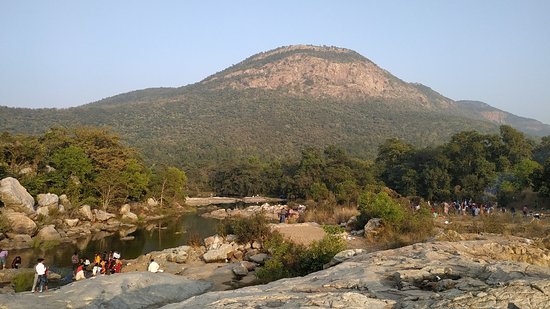One of the deepest mysteries regarding Earth’s ancient history is that of the land emergence and its origins. Even with all the high technological advances at our disposal, we have only been able to pinpoint how and when the continents emerged from the ancient Water-world. We can only theorise if a tectonic activity was what brought this about.
Surprisingly, a recent international study led by Indian, Australian and South African scientists has revealed that the Earth’s first continents or “cratons” may have emerged from the ocean around 3.2 billion years back. This new finding is contrary to the previous calculations which suggested that the first continents emerged 2.5 billion years ago. The scientists have been able to get hold of this discovery in Singhbhum, Jharkhand!
However, the precise timing of the emergence of these cratons in Jharkhand is still ambiguous. This is where the present study comes in. Not only does this new study suggest that the continents emerged 700 million years earlier than previously thought, but it also claims that the entire craton in Singhbhum entire cratons, emerged from the oceans 3.3 billion years ago.
Discovering through the rocks
Priyadarshi Chowdhury from Australia’s Monash University assessed igneous and sedimentary records of the Singhbhum Craton. The team researchers trekked all the way to the Singhbhum, where “pockets” of ancient sedimentary rocks had previously been found. They also used continental fragments from India, Australia, and South Africa to date some of the planet’s oldest rocks, which are supposed to have developed from the world’s first beaches.
In order to date the rocks, the researchers looked for zircon grains consisting of uranium. Separating the tiny zircon grains was a tedious process, but their efforts paid off. When the team studied the chemical composition of the zircons, they discovered that the rocks are 3.1 billion years old and were formed in ancient rivers, beaches, and shallow oceans.
These water bodies proved that there was a continental land around.
Thus, they found that the Singhbhum district was above ocean level 3.1 billion years prior and proposed that the Singhbhum Craton in eastern India at first transcended the oceans around 3.3 billion to 3.2 billion years prior, making the area perhaps the most seasoned ocean side on earth.
How did the Singhbham Craton emerge out of the ocean?
The researchers took samples of volcanic rocks from the cratons found in Singhbhum. These volcanic rocks are generated by the crystallisation of hot magma. These igneous rocks are found directly beneath the sedimentary rocks in the craton, forming a kind of foundation.
Chowdhury explains that the compound piece of volcanic rocks encodes data about the tension and temperature at which they are framed. The researchers made a model utilizing the stones’ synthetic arrangements to imitate the conditions that produced the stones and later pushed them through the sea’s surface.
If the continents were to arise over the outer layer of the water, their outside layers should be something like 45 km in thickness. If their thickness is under 40 km, the continental squares would stay lowered.
As per the model the researchers made, warmed magma tufts underneath the covering made spaces of the craton thicken to around 50 km and become enhanced with lightweight components like Sicilia and quartz around 3.5 billion to 3.2 billion years back. In contrast with the denser stone encompassing it, this interaction left the craton “physically thick and chemically light,” buoying the landmass up to float “like a cork in water”.
The new discoveries shed all the more light on the development of the Earth’s soonest landmasses and what they might have meant for the planet’s environment, seas and environment.











